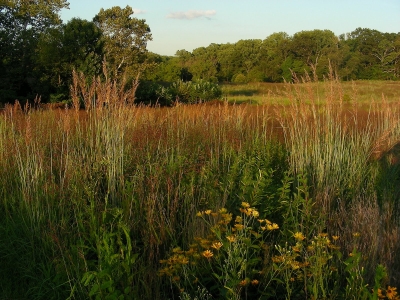

A natural landscape. Native plants incorporated into landscaping projects provide numerous benefits. Photo: Feodor U. Pitcairn
By landscaping with native plants, you help preserve those plant species as well as the birds, butterflies, and other wildlife that heavily depend upon those plants.
Native plants are best able to support native wildlife. They bloom, produce leaves, and develop fruit when our native species need these resources most. They also have the necessary chemical compositions or “flavors” to which native species are adapted for survival.
However, most home and commercial landscapes are dominated by alien species. Within urban landscapes, native plants are often isolated islands that provide only limited resources for native wildlife.
With increased use of native plants, we can create sanctuaries for wildlife within urban landscapes.
While native plants support native insects and other organisms, they also tend to have natural defenses that prevent native “pests” from causing severe damage. Whereas, non-native or alien plants are more often defenseless against aggressive pest species.
In addition, many insecticides also kill beneficial insects that naturally attack the pests. When this occurs, the insecticide application may actually lead to increased pest problems. By planting native species, you can reduce the need for harmful pesticides that can kill beneficial insects and pose a threat to human health.
Native plants used wisely in the landscape often require less water, fertilizer, pesticides, and maintenance than their alien counterparts do. By reducing surface irrigation and chemical inputs, you can save time, money, energy, and help prevent polluted surface water from reaching natural water sources.